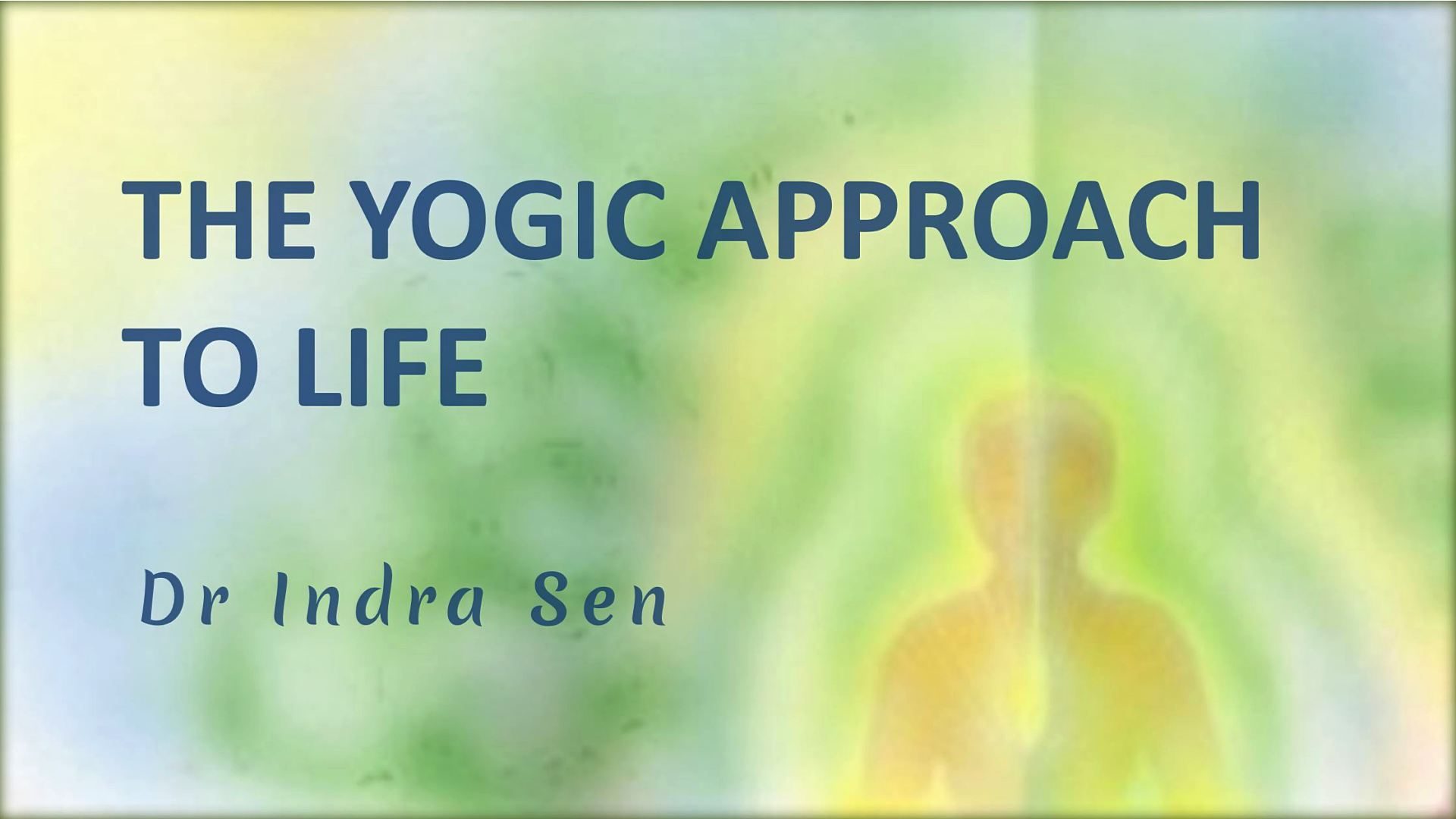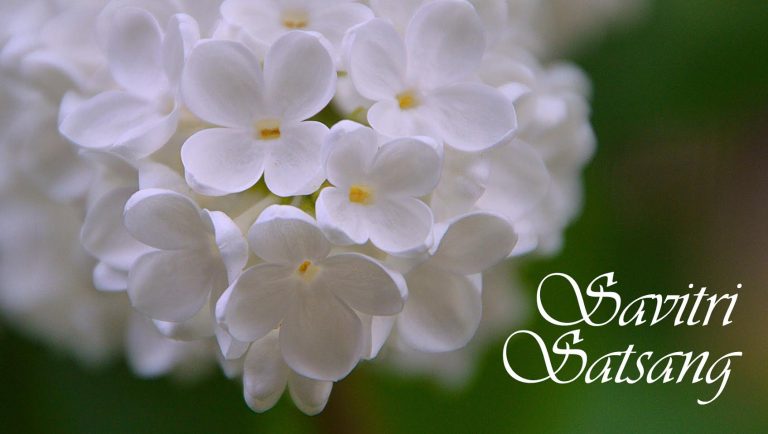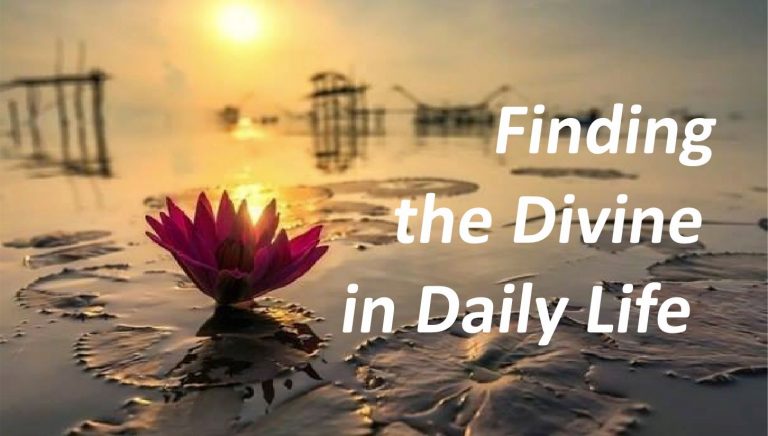Our ordinary approach in life is one of seeking immediate satisfactions of our impulses, of acquisition, possession, construction, destruction, eating, social companionship, activity, rest, etc., etc.
A child’s behaviour is typical of it. Each impulse commands fully when it is awake and active. There is hardly any coordination among the impulses.
With the emergence of thinking and the activity of comparing and ‘looking before and after’ a coordination begins to come about. Social demands further help and we learn to restrain and regulate the original self-assertion of the impulses.
The adult person is a relatively unified individual, but there is so much impulsiveness, so much conflict, division, vacillation, regret in it. A whole-heartedness of thought, feeling and action is a rare experience. A whole-hearted, satisfied and effective living is only a vision and a possibility.
Our ordinary living is superficial. We live at the surface of our consciousness interested in the surface qualities of things and persons and seek usually our own immediate satisfactions of varied kinds. Our lives are thus much divided and egoistic, i.e., self-centred. A feeling for the good of life on the whole, its true fulfilment, is a different matter and has to be carefully cultivated.
The yogic living is essentially a deeper living, a calmer living, a more peaceful and detached living and, therefore, it commands a larger perspective, a fuller good and is more satisfying. It has a larger coordination among the varied impulses and has a greater unity, a greater self-control and more effectivity in life.
But the true seat of unity and integration and abiding self-satisfaction is the spiritual fact of human personality. Wherever it is active and prominent, it lends a marvellous charm and spontaneity and creativity to life. And to activise it is really all the secret and success of life. It is sometimes conspicuous in children at a stage. They are then strikingly attractive. But soon social prohibitions and inhibitions make them too dependent on the external things and they lose contact with their soul.
One might try to see what the yogic approach would be to the different problems and situations of life, to food and eating, to one’s work, to social relations.
Food and eating become complicated and difficult because of our approach of greed for food and attachment to taste, of insistent likes and dislikes for superficial qualities of things. Now, if we are able to take an approach of a deeper poise of some detachment and freedom, shall we not be able to enjoy food more widely and also eat as needed.
Right attitude to work is again an invaluable asset of life. A deeper and a calmer poise always means more concentration and more effectivity and less anxiety and less worry. Surely that would be an advantage for professional work.
Social relations too would acquire a new meaning for the yogic approach to life. They would not be superficial and of petty likes and dislikes, but of a wider and a larger feeling for persons. Will that not make for better and more adjustable contacts in social life?
And what is of unique importance is that the yogic approach involves an awareness of a Higher Governance of life and is able to turn to it, more or less, for help in all difficulties in life.
But how to cultivate this most useful yogic approach to life? Well, the most important thing is to have and cultivate a sense, a feeling and a seeking for the soul deep within us, in our heart. To cultivate a self-poise, a detachment from the circumstances, all things external, and have a feeling for oneself and one’s deep-seated soul, the sweet centre of our life.
To a young man of Sri Aurobindo Ashram, Pondicherry, who happened to go to Europe to work there, the Mother said to him in a birthday message: “You find yourself in a new situation, swamped by new impressions all the time, but what does your soul say to all this?” In French, the Mother said, “Que dit votre âme?” (What does your soul say?)
The Mother had sought to make him aware of his soul and asked him to learn to consult it regarding all that was crowding upon his mind and determining all his life and behaviour.
The most important thing to cultivate really is — by whatever means we do — that there is a bright and a blissful central spiritual fact in our life — a soul — which should really inspire all our thoughts, feelings and actions. A keen persistent aspiration for it, a rejection of all feeling that external things alone matter, enjoyment of soul experiences in literature, art and music and a practice of concentration in the heart are useful exercises for the cultivation of the feeling for the soul or the yogic poise or posture for life.
And this cultivation or Sadhana, once one gets the deep joy of it, is not at all difficult. In fact, it can easily become spontaneous.
Sri Aurobindo’s epic poem represents in moving words man’s urge to find his soul. The call comes in these words:
Why earnest thou to this dumb deathbound earth,
This ignorant life beneath indifferent skies
Tied like a sacrifice on the altar of Time,
O spirit, O immortal energy,
If ‘twas to nurse grief in a helpless heart
Or with hard tearless eyes await thy doom?
Arise, O soul, and vanquish Time and Death.
* * *
Finding the soul then becomes a passion and Savitri, as seeker of the soul, traverses the inner realms of consciousness, one after the other, until she reaches the soul. Here are the thrilling lines depicting the last stages of her inward journey:
At last a change approached, the emptiness broke;
A wave rippled within, the world had stirred;
Once more her inner self became her space
There was felt a blissful nearness to the Goal;
Heaven leaned low to kiss the sacred hill,
The air trembled with passion and delight.
* * *
As if an old remembered dream come true,
She recognised in her prophetic mind
The imperishable lustre of that sky,
The tremulous sweetness of that happy air
And, covered from mind’s view and life’s approach,
The mystic cavern in the sacred hill
And knew the dwelling of her secret soul.
* * *
And when she found her soul, her entire vision of life changed. Then all things appeared in a new light.
All things she saw as a masquerade of Truth
Disguised in the costumes of Ignorance
Crossing the years to immortality:
All she could front with the strong spirit’s peace.
The yogic approach to life beginning as a little deeper poise of consciousness can, if pursued long enough, lead to such a marvellous realisation — a realisation of a Conscious Soul in a Conscious Universe, living as a master and a king, over the lesser manifestations of matter, life and mind.




